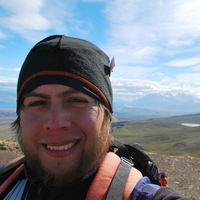Papers by Fabián Espinoza

Hydrological Sciences Journal, 2012
The Baker basin (27 000 km 2) is located in one of the most unique and remote areas of the planet... more The Baker basin (27 000 km 2) is located in one of the most unique and remote areas of the planet. Its hydrological regime is poised to undergo dramatic changes in the near future due to hydropower development and climate change. The basin contains the second largest lake in South America, and part of a major icefield. This study documents the natural baseline of the Baker River basin, discusses the main hydrological modes and analyses the potential for sustainable management. Annual precipitation varies several-fold from the eastern Patagonian steppes to the North Patagonian Icefield. The westernmost subbasins are strongly governed by glacier-melt with a peak discharge in the austral summer (January-March). The easternmost sub-basins have a much more seasonal response governed by quicker snowmelt in spring (November-December), while they exhibit low flows typical for semi-arid regions during summer and autumn. Topography, vegetation and wetlands may also influence streamflow. The strong spatio-temporal gradients and variability highlight the need for further monitoring, particularly in the headwaters, especially given the severe changes these basins are expected to undergo. The large diversity of hydrological controls and climate change pose significant challenges for hydrological prediction and management.
Five similar glacial-lake outburst floods (GLOFs) occurred in April, October,
Natural Hazards, 2010
Five similar glacial-lake outburst floods (GLOFs) occurred in April, October,

Hydrological Sciences Journal, 2012
ABSTRACT The Baker basin (27 000 km2) is located in one of the most pristine and remote areas of ... more ABSTRACT The Baker basin (27 000 km2) is located in one of the most pristine and remote areas of the planet. Its hydrological regime is poised to undergo dramatic changes in the near future due to hydropower development and climate change. The basin contains the second-largest lake in South America, and part of a major icefield. This study documents the natural baseline of the Baker River basin, discusses the main hydrological modes and analyses the potential for sustainable management. Annual precipitation varies several-fold from the eastern Patagonian steppes to the North Patagonian Icefield. The westernmost sub-basins are strongly governed by glacier melt with a peak discharge in the austral summer (January–March). The easternmost sub-basins have a much more seasonal response governed by quicker snowmelt in spring (November–December), while they exhibit low flows typical for semi-arid regions during summer and autumn. Topography, vegetation and wetlands may also influence streamflow. The strong spatio-temporal gradients and variability highlight the need for further monitoring, particularly in the headwaters, especially given the severe changes these basins are expected to undergo. The great diversity of hydrological controls and climate change pose significant challenges for hydrological prediction and management.Editor Z.W. KundzewiczCitation Dussaillant, J.A., Buytaert, W., Meier, C., and Espinoza, F. 2012. Hydrological regime of remote catchments with extreme gradients under accelerated change: the Baker basin in Patagonia. Hydrological Sciences Journal, 57 (8), 1530–1542.




Uploads
Papers by Fabián Espinoza